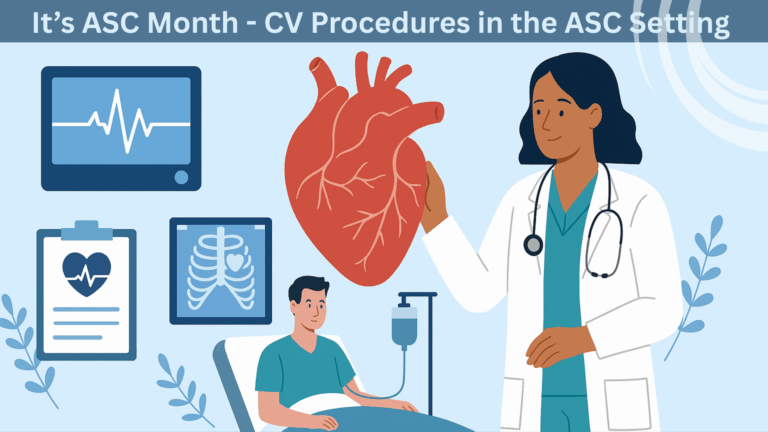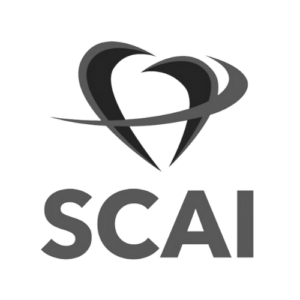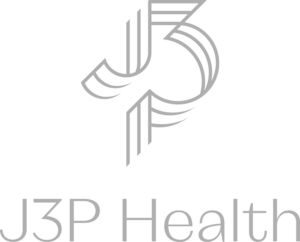Why Should You Consider an Ambulatory Surgery Center in 2023?
Is an Ambulatory Surgery Center (ASC) in your strategic plan for the near future? If not, it’s worth considering! ASCs have not only proven to be more convenient, offering a streamlined and personalized experience for the patient, but also have shown to be significantly more efficient and economically sound for many specialties, including cardiology.
Cardiac rhythm management (CRM) procedures and devices have been approved for payment in the ASC setting for some time, but in 2019, payment rates for CRM device procedures improved, making the move to the ASC setting more attractive from a revenue perspective for some programs. Further, 17 new procedure codes for diagnostic and interventional cardiology were also approved. And then in November 2019, CMS issued its final rule on percutaneous coronary intervention (PCI), by approving the addition of six CPT codes to the ASC-covered procedures list for calendar year (CY) 2020.
Corazon anticipates that additional cardiac procedures, such as cardiac mapping procedures, IVUS, iFFR, and simple ablation procedures, will continue to be approved. Further expansion of payment for cardiac procedures by commercial payors, based on demonstrated efficacy of cases being performed in the ASC setting at a significantly lower cost than hospital rates, along with higher patient satisfaction, should place ASC strategy as a significant focus for the coming year and beyond.
What Made the Shift of Cardiovascular Procedures to the ASC Possible?
-
- For more than a decade, physicians have successfully performed peripheral vascular interventional procedures and managed device costs in a non-hospital outpatient setting to provide safe, lower-cost interventional peripheral vascular care.
- Cardiac implant devices such as pacemakers, defibrillators, and loop recorders in the ASC setting are being rapidly adopted and have proven to be safe and cost-effective, especially since these procedures were added to the ASC list several years ago.
- Advancements like transradial access, same-day discharge for PCI, and support from both the American College of Cardiology (ACC) and the Society for Cardiovascular Angiography and Interventions (SCAI) have helped make the shift of various cardiac cases to the ASC setting possible.
Impact on Outpatient PCI Medicare Rates
CMS estimates that if 5% of coronary interventions shifted to the ASC setting in 2020, Medicare payments will be reduced by $20 million in a single year, since procedures can be offered at rates 35-50% lower than in the hospital setting (Mitzel, Toth, 2020). CV care is anticipated to become widespread and successful at providing significant operational and economic efficiencies while allowing for competitive pricing and ease of patient access.
Key ASC trends to look for in 2023:
-
- Expectation that CMS and commercial carriers continue to move higher-acuity cases to the lower-cost setting of an ASC.
- ASC’s increasing attractiveness to private equity groups.
- Increases in CMS reimbursement through 2023, which, in turn, should cause a bump in commercial payor reimbursement rates as well.
- Coverage of more complex procedures in the ASC setting.
- Gradual shift toward value-based payment models, mostly in the form of bundled payments, in the ASC setting.
- CMS aggressiveness at pushing site-neutral payments to compress HOPD rates.
The ASC market is growing and competitive. A Cardiovascular ASC strategy should consider:
-
- A thorough assessment of existing infrastructure.
- An evaluation of resources essential not only within the CV service line but within the entire system as well.
- Cath lab capacity. How crowded are cath lab schedules and will this strategy help free-up lab availability for higher-acuity, higher-margin cases?
- Federal and state regulatory requirements, accreditation considerations, and Certificate of Need laws.
- The 2014 SCAI/ACC/AHA expert consensus statement on elective PCI in a setting without surgical backup. This provides guidance for excluding patients and coronary lesions potentially considered inappropriate for the outpatient setting.
CVSL leaders need to be strategic and somewhat aggressive in their planning to mitigate the impact on the structure and margins of hospital programs while also keeping competition in mind. If you’re not already in the ASC “game,” plans should be made for entry as soon as possible! Organizations that fall behind now, will lose market share to local or regional competitors that are already planning for case shifts.
Adequate planning for WHAT clinical cases to move, HOW to operationally move them, and WHY this shift makes financial sense will ensure any hospital’s ambulatory CV strategy addresses the burning-hot topic of setting of care. Corazon can help with this transition, while also providing insight and advice on what strategies to consider for the time and space left at the hospital as a separate growth opportunity.
For more information on developing an ASC strategy that includes a focus on CV services, request our webinar recording for “Settings of Care: The Accelerated Shift to Ambulatory Surgery Centers – Opportunities and Legal/Regulatory Considerations” in our store below!
[ecwid_product id=”368965417″ display=”picture title price options addtobag” version=”2″ show_border=”1″ show_price_on_button=”1″ center_align=”1″]
References:
- Centers for Medicare & Medicaid Services. CY 2020 Medicare hospital outpatient prospective payment system and ambulatory surgical center payment system proposed rule (CMS-1717-P). https://www.cms.gov/newsroom/fact-sheets/cy-2020-medicare-hospital-outpatient-prospective-payment-system-and-ambulatory-surgical-center . Accessed September 28, 2020.
- Dehmer CJ, Blankenship JC, Cilingiroglu M, et al. SCAI/ACC/AHA expert consensus document: 2014 update on percutaneous coronary intervention without on-site surgical backup. J Am Coll Cardiol. 2014;63:2624-2641.
- Dyrda, L., ASC payer markets and trends: 5 leaders share key thoughts for 2021 and beyond. Becker’s ASC Review. Accessed online September 26, 2020 at https://www.beckersasc.com/asc-coding-billing-and-collections/asc-payer-markets-and-trends-5-leaders-share-key-thoughts-for-2021-and-beyond.html?origin=ASCE&utm_source=ASCE&utm_medium=email&oly_enc_id=0028G1637890G0E
- McDonald, T., Managing the Shift to Elective PCI in the ASC Setting: Is your interventional cardiology program prepared? Cardiac Interventions Today, Accessed online September 26, 2020 at: https://citoday.com/articles/2020-jan-feb/managing-the-shift-to-elective-pci-in-the-asc-setting
- Mitzel, D., Toth, M., Coronary Interventions in the ASC: Now What? Does Your Health System Have an Ambulatory Strategy? Cath Lab Digest, Accessed online September 26, 2020 at: https://www.cathlabdigest.com/content/coronary-interventions-asc-now-what-does-your-health-system-have-ambulatory-strategy

 company
company 
 (412) 364-8200
(412) 364-8200




























